Affiliate disclosure: This post may contain affiliate links. Please see our Privacy Policy.
Gravlax is a type of salt-cured salmon that’s traditionally prepared in Nordic countries. It’s cured and pressed, but not smoked, resulting in a unique flavor subtler than smoked salmon. Making gravlax is incredibly simple, and requires no special ingredients or equipment.
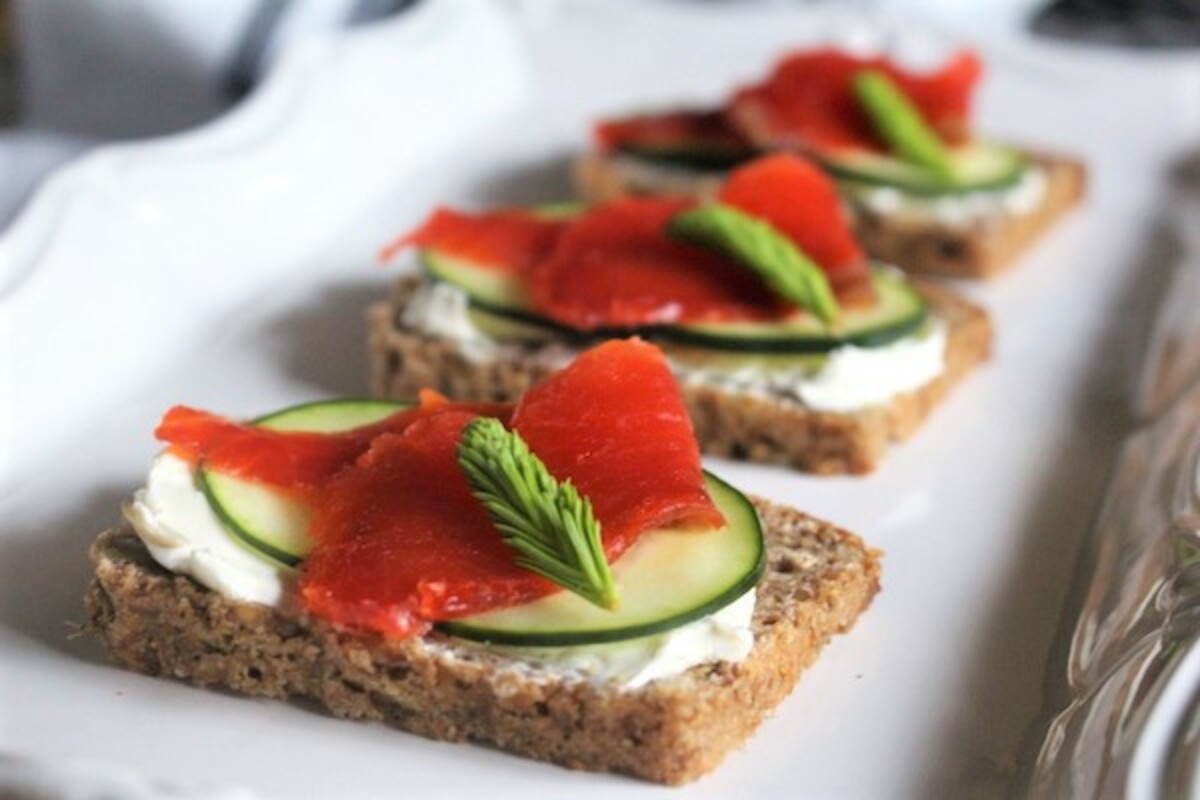
Historical food preservation methods always intrigue me, but many have fallen out of use for good reason. Things like charcuterie, parmesan cheese, and sauerkraut were developed out of necessity at the time, but they still grace our tables because they’re just downright delicious.
With refrigeration, you can pick up salmon fresh or frozen from any grocery store year-round, but you’ll still make a special trip to the bagel shop for a few slices of cured salmon on your breakfast sandwich. These recipes have stood the test of time, and we still crave cured, cultured and fermented foods even when they’re no longer strictly required for food preservation.
Making smoked salmon at home is a bit tricky, largely because it requires a smoker. Gravlax, on the other hand, is an unsmoked cured salmon that’s easy to make with just salmon, salt, seasonings, and patience.
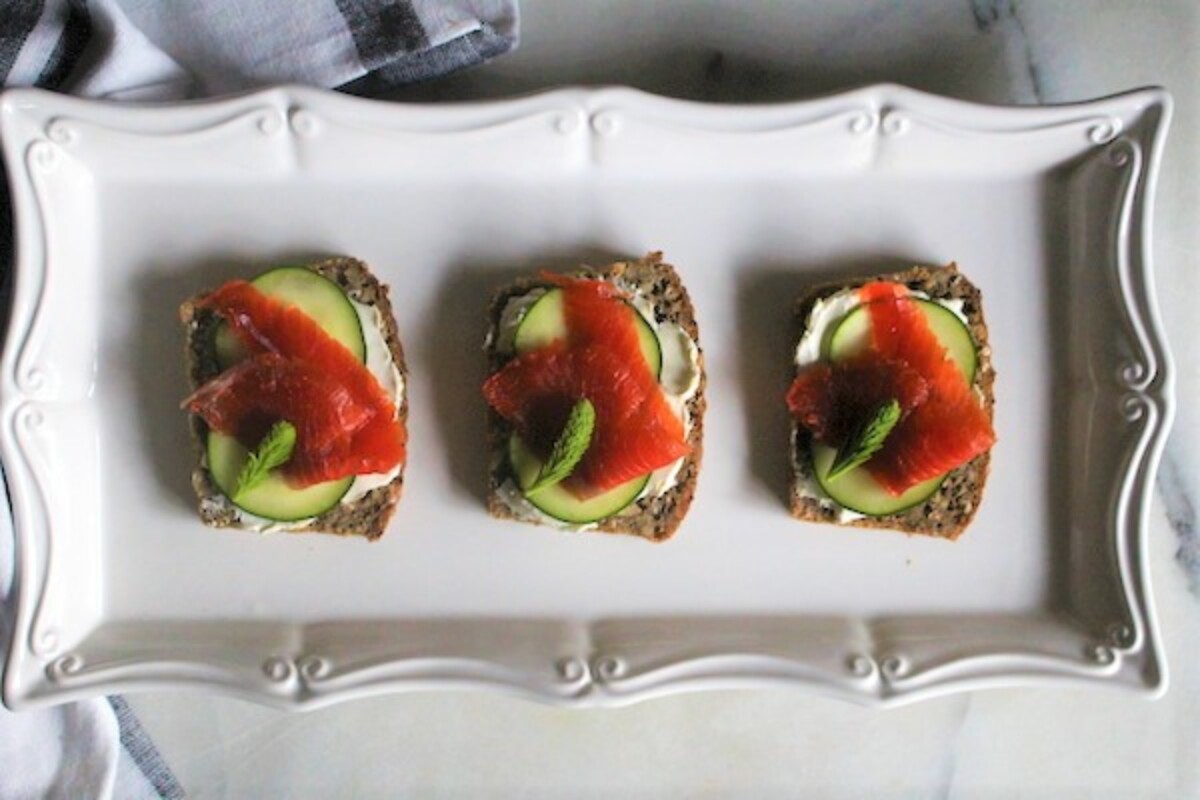
What is Gravlax?
The word “gravlax” translates to “grave salmon,” which might sound strange, but it hints at how it was originally prepared. Salmon filets were salted and seasoned, and then burried in the sand above the high tide mark on a sandy beach. The cool earth acted as a natural refrigerator, and the weight above pressed moisture from the fish to help it cure.
Before they were burried, the filets were often wrapped to keep them from getting sandy. Birch bark is the oldest form of wrapping, and it also imparted flavor into the fish. Birch also acts as a natural preservative, helping to prevent spoilage when it’s used as a food container.
The curing, combined with the cool temperatures underground and the natural preservative properties of birch bark allowed gravlax to keep for weeks, and sometimes many months.
Burying salted salmon was like an insurance policy against future hunger, and we still eat it today because it also results in incredibly tasty cured salmon.
Modern gravlax isn’t cured under the sand, and it’s not left for weeks or months at a time. The whole process happens in the refrigerator, and it’s ready start to finish in just a few days.
Seasonings have shifted a bit as well, and now it’s popular to season gravlax with dill. Older traditions were more woodland-based and would compliment the flavor of the birch bark with juniper berries and other woodland flavors.
Pine needles and branches were often used instead to wrap the burried fish, instead of birch bark. I’m making gravlax with balsam fir tips (similar to spruce tips), which add a mild resinous flavor to the cured salmon. It’s absolutely delicious, and all you really need to do is pile them on with the cure.

Equipment for Making Gravlax
Honestly, you don’t technically need any equipment for making gravlax. A simple Ziploc bag will get the job done, but a 9×13 baking tray is a little bit more elegant. Two trays are helpful, as you can use the second tray to add weight to the salmon to help it cure. That said, adding weight is optional and it’ll cure quite well on its own if you’re patient.
You will need a good bit of space in the refrigerator, as the salmon should stay cool at all times during this process. Cool temperatures are essential to preventing spoilage, and you shouldn’t attempt to make gravlax at room temperature.
All I’m using here is a 9×13 stoneware baking tray, and I’ve lined the bottom with my salt/sugar cure and conifer tips before adding my salmon filet (skin on).
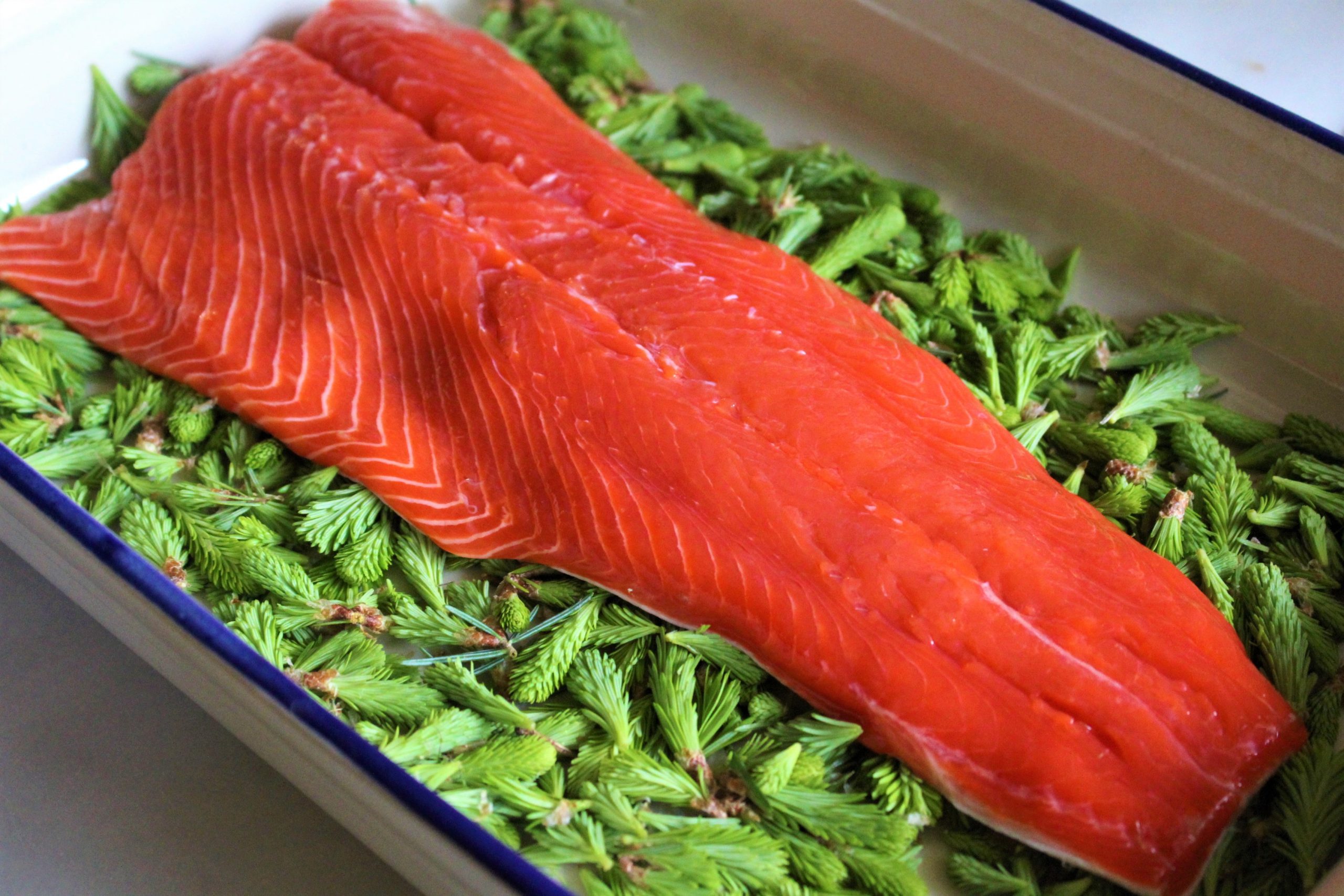
How to Make Gravlax
I’m going to give you a specific recipe for gravlax, but I want you to know that making cured salmon at home isn’t necessarily an exact science. Believe it or not, you don’t have to follow this recipe at all, and you’re welcome to play with the ratios in the cure as you please. (Not what you were expecting from a raw fish recipe, is it?)
These days, most people cure using the “saltbox” method where you bury the fish in a boatload of salt/spices/etc to help everything infuse quickly. There’s way more cure in there than is technically necessary, which is a good thing…and gives you a big margin for error safety-wise.
(Good gravlax starts with the freshest fish possible. Be sure to tell your fishmonger that you need “sushi grade” salmon and that you’ll be eating this raw!)
Cure for Gravlax
Most curing recipes suggest using at least 3% the weight of the meat in salt for a cure. In rough numbers, a 4-pound filet is about 1800 grams, which means you’d need about 55 grams salt or a bit under 1/4 cup. I don’t suggest cutting it that close though, given that it’s an absolute minimum.
Salt was expensive historically, and they probably would have cut it a bit closer to the safety margin than I do. I’m giving you a recipe that uses 1 cup of salt, which means that a good bit of salt will be washed down the drain at the end of this process. That’s ok, you’ll know you have a properly salt-cured salmon filet, and you’ll be working with an abundance of caution.
(If you want to cut it down a bit, I don’t suggest going any lower than 1/2 cup salt to a 4lb filet. At that amount, it’s totally sufficient and you have minimal waste. You won’t have to weigh the salt, as you would down to the gram if you cut it any closer than that, and you can safely use a volume measurement.)
Beyond salt, these days gravlax is also cured with sugar to help balance out the flavors. The ratio of salt to sugar is a matter of personal preference, and I’ve tried it in many different ways.
A 1:1 ratio might seem like the most balanced, but it actually results in a bland cured fish, even when you add plenty of other spices. Neither salt nor sugar really shine through in the finished gravlax.
A cure with either more sugar or more salt actually results in a higher quality product, and it doesn’t matter which way you choose. More salt will give you a savory gravlax that’s balanced with a subtle sweetness. More sugar, conversely, will result in a sweeter gravlax that’s balanced with a subtle saltiness.
Depending on your tastes, add 1/2 cup of sugar to 1 1/2 cups of sugar for each cup of salt. The salt is there for safety, and while the sugar does help reduce the water in the salmon through osmosis, it’s largely in there for flavor. If you want to use just salt that’s fine too, but it won’t be nearly as tasty.
Once you have the cure mixed, add in spices to taste. Dill, Juniper, and black pepper are common choices.
If using dill, see if you can get a big bunch of fresh dill fronds and then lay them below and above the salmon filet, as I’ve layered conifer tips above and below my filet along with the cure.
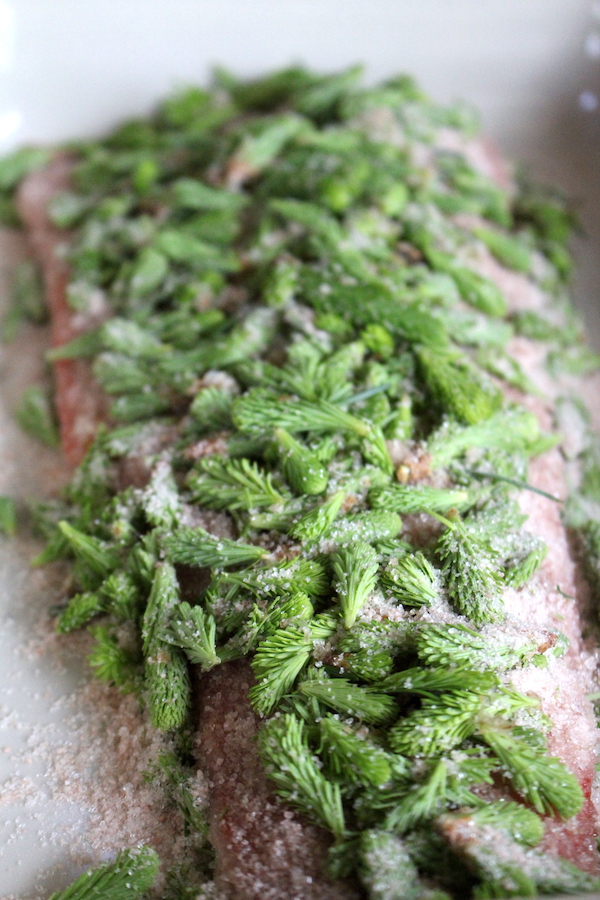
Curing Gravlax
Pour about 1/2 the cure down in a baking tray, along with half the spices, and then set the salmon filet on the cure. Add the remaining cure and spices on top. If you’re using the ziploc bag method, just put everything into the bag and give it a shake to make sure the salmon is covered on all sides with the cure.
Put the salmon in the refrigerator to cure for 2 to 3 days. The exact time depends on your cure and the fish itself, but as the fish cures, the color and the texture will begin to change. If you give it a gentle press with your finger it should feel firm, and you should be able to feel if there’s an uncured portion in the center.
Give the fish a gentle finger press from one end to the other, as it’ll cure faster at the thin tail end than in the thicker center of the filet. It should feel the same all the way through, but if you feel a bit of squish as you get to the thicker parts of the fish then it’s not quite done yet.
Adding a weight on top, about 2-4 pounds, will speed up the process. You can do this by placing another baking tray on top of the one you’re using and even adding a few things into that tray to increase the weight. Similarly, in a Ziploc bag, just put it under a plate and then put a few things from inside your fridge on top of it. This is optional, but it helps the fish shed moisture faster and take on the cure a bit quicker.
If it looks like the fish isn’t curing evenly, or that the cure’s not getting to a portion of the fish, add a bit more cure there or baste the fish with the salty juices from the pan.
After 2-3 days, when the fish is completely cured, remove it from the tray and rinse off the salt/seasoning with cold water. It’s now ready to serve!
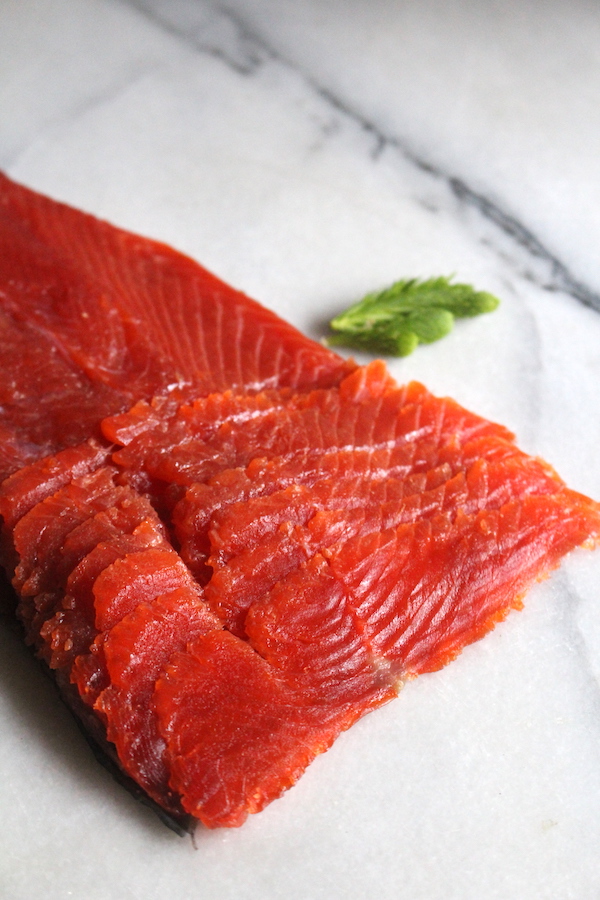
Serving Gravlax
Slicing gravlax is honestly the hardest part of this whole process. You’ll need a very sharp knife, and I’d recommend a long thing filet knife.
Ideally, gravlax is served in very thin pieces, and thick pieces won’t give you the same experience (and it’s harder to chew/bite through).
Slice on a diagonal, which will give you a wider piece, aiming to turn the knife horizontal as you hit the fish skin. Slicing through the skin isn’t really practical (or desirable), and you’ll be left with a clean salmon skin once this process is complete.
(I like to add the leftover cured salmon skin into the pot when I’m making Lohikeitto, which is a traditional salmon soup that comes from Finland. The gravlax skin basically creates a quick fish stock if simmered in liquid before the other ingredients are added, and then I skip the salt in the recipe.)
The thin strips of gravlax are usually served on bread, often accompanied by a mustard sauce. I personally like them best on rye bread with a bit of cream cheese and cucumber.

How Long does Gravlax Last?
Originally, gravlax was made as a form of food preservation, but the fish was preserved in the salt burried under the sand. It wasn’t dug up, rinsed off, served…and then served again a month later. As soon as the gravlax comes out of the cure, it should be eaten quickly, ideally within 2-3 days.
This is a quick cured salmon that’s not meant for long-term preservation. It’s not as salty or as “cured” as the old-school grave salmon made in the Nordics a millennia ago, but you’re also probably not a starving medieval peasant. If you need to keep it longer than 2-3 days, it should be stored in the freezer.
A good rule of thumb is to assume that the fish is not cured at all. If you’d expect it to last a week in the refrigerator after purchase, then count those 2-3 days in the cure as spent time, and be sure to eat it before the week’s out.
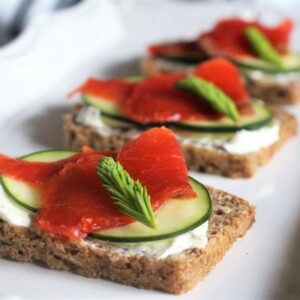
Gravlax (Salt Cured Salmon)
Ingredients
- 4 lbs Salmon Filet, Sushi Grade, Skin On
- 1 cup salt, See note
- 1/2 or 1 1/2 cups sugar, see note
- Spices of Choice such as dill, juniper berries, black pepper or conifer tips
Instructions
- Remove the salmon from its package and rinse it quickly in cool water.
- Mix the salt and sugar to create the cure.
- Place about half the cure and spices into a 9 x 13-inch baking pan, and then lay the salmon filet on top of the cure skin side down. Ensure that the salt/sugar cure completely coats the bottom of the filet, and rub it in a bit if necessary to ensure that it's covering the whole underside of the fish.
- Pour the remaining half of the cure over the top of the fish, and ensure it covers the whole filet in a thin layer. Don't leave any area of the fish without at least a thin layer of cure covering the surface. Cover with more spices of your choice (optional).
- Cover the tray, and place the fish in the refrigerator for 2 to 3 days until the fish is uniformly firm. The color will have changed, and it should feel firm (more like cooked fish than raw) when pressed with your finger).
- Once it's done curing, remove from the tray and rinse the salt and spices off in cold water. Pat dry and then slice thinly to serve.
Notes
Salt Cured Meats & Fish
Looking for more easy home curing recipes?

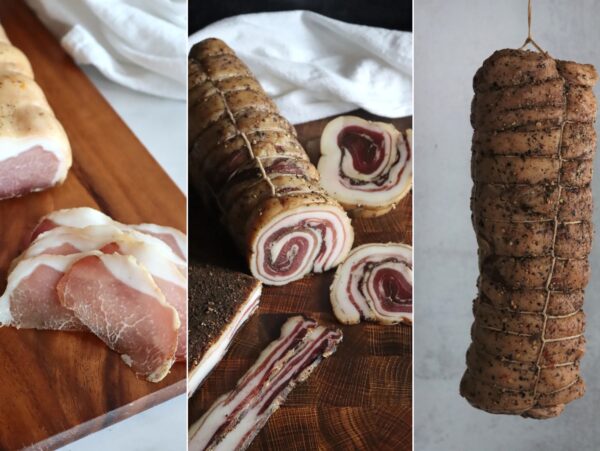













I’m so glad I found this website. I’m 100% Scandinavian, my mother is full blood Finn and my father is Half Swede and half Norwegian. I love it when I come upon Finnish food and recipes. I have a freezer full of Sockeye and am going to try both the salt cured salmon and the Finnish salmon soup! Thank you.
You’re very welcome. We’re so glad you’re enjoying the blog.
Hi there. Enjoy your emails. Can you make this from frozen filets?
I don’t see why not. I would just let them thaw first.